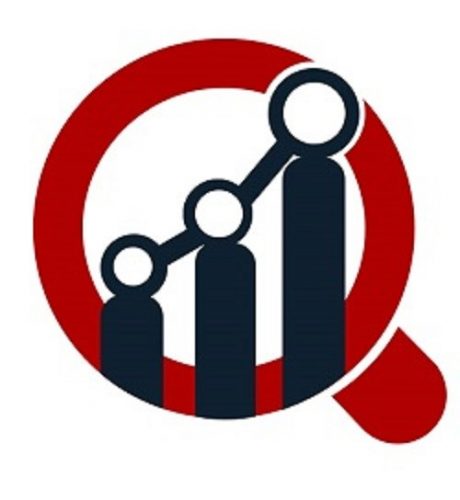Developments in the treatment of connective tissue diseases (CTDs) have been improved considerably, and the global connective tissue diseases market is slated to grow at a promising CAGR of 11.5% over the forecast period of 2017-2023. The cause of the disease is unknown and there's no cure for connective tissue disease yet, but medications are present to manage the signs and symptoms. CTDs include a large number of disorders which can affect different organs of the body. There is broad variability in disorders among patient suffering from CTDs.
Get Sample Copy @ https://www.marketresearchfuture.com/sample_request/4977
It is estimated that connective tissue disease market is expected to grow at a CAGR 11.5% during the forecast period of 2017-2023.
A significant increase in the research and development efforts to find treatment and cure for CTDs have aided the growth of the market. Various therapy trials are underway which have been able to identify promising novel approaches to treat CTDs and are expected to boost the growth of the market. Rising prevalence of CTDs across the globe, especially in women has propelled the growth of the market. Additionally, support from governments across the world along with funds for R&D from the private industry is also a key driver of the growth of the market. With the increase in awareness and acceptance among the general population about connective tissue diseases, the diagnosed and drug-treated population will increase which will positively impact the market. Rising expenditure on healthcare, high unmet medical needs of the current treatment and growing prevalence of CTDs in Asia and Africa are expected to promote the growth of the market. However, the growth of the market might be hindered by lack of a knowledgeable workforce, inadequate research and development infrastructure, lack of funds in middle and low-income countries.
Segmentation
The connective tissue disease market is segmented on the basis of diagnosis, treatment, and end-user.
On the basis of diagnosis, market is segmented into physical examination, X-ray examination, ANA (Antinuclear Antibody Test), and others.
On the basis of treatment, market is classified into non-steroidal anti-inflammatory drugs (NSAIDs), cortisone drugs/steroids, antimalarial drugs, cytotoxic drugs, and others
On the basis of end-user, market is segmented into hospital, diagnostic clinics, and others.
Regional Analysis
The Americas dominate the connective tissue disease market owing to the rising awareness among people, and increasing healthcare expenditure. As per the facts suggested by the Centers for Disease Control and Prevention (CDC), out of the total annual healthcare expenditure, 86% is for people with chronic health conditions in the United States.
Europe holds the second position in the connective tissue disease market. It is expected that the support provided by government bodies for research & development and improvement in reimbursement policies in healthcare will drive the market in Europe.
Asia Pacific is the fastest growing market connective tissue disease, owing to a huge patient pool, developing healthcare technology, and rising healthcare expenditure in some countries within this region. According to the Australian Institute of Health and Welfare, in the years 2015 to 2016, the total health expenditure was USD 170.4 billion, which is 3.6% higher than expenditure of 2014–15.
The Middle East & Africa has the lowest market for connective tissue disease due to lack of technical knowledge and poor medical facilities.
Key Players
Some of key the players in the market are Abbott Laboratories, Bayer AG, F. Hoffmann-La Roche Ltd, Pfizer, AutoImmune Inc., Johnson & Johnson, Amgen Inc., AstraZeneca, Eli Lilly and Company, Biogen, LUPIN, and others.
Browse Complete 85 Pages Premium Research Report Enabled with 66 Respective Tables and Figures @ https://www.marketresearchfuture.com/reports/connective-tissue-disease-market-4977
Detailed Table of Contents:
1 Introduction
1.1 Definition
1.2 Scope Of Study
1.2.1 Research Objective
1.2.2 Assumptions & Limitations
1.2.2.1 Assumptions
1.2.2.2 Limitations
1.3 Market Structure:
2 Research Methodology
2.1 Research Process:
2.2 Primary Research
2.3 Secondary Research
3 Market Dynamics
3.1 Drivers
3.2 Restraints
3.3 Opportunities
3.4 Macroeconomic Indicators
...Continued!
Send An Enquiry @ https://www.marketresearchfuture.com/enquiry/4977
About US:
Market Research Future (MRFR), enable customers to unravel the complexity of various industries through Cooked Research Report (CRR), Half-Cooked Research Reports (HCRR), Raw Research Reports (3R), Continuous-Feed Research (CFR), and Market Research & Consulting Services.
Contact Us:
Market Research Future
Office No. 528, Amanora Chambers
Magarpatta Road, Hadapsar,
Pune - 411028
Maharashtra, India
Phone: +1 646 845 9312
Email: sales@marketresearchfuture.com
